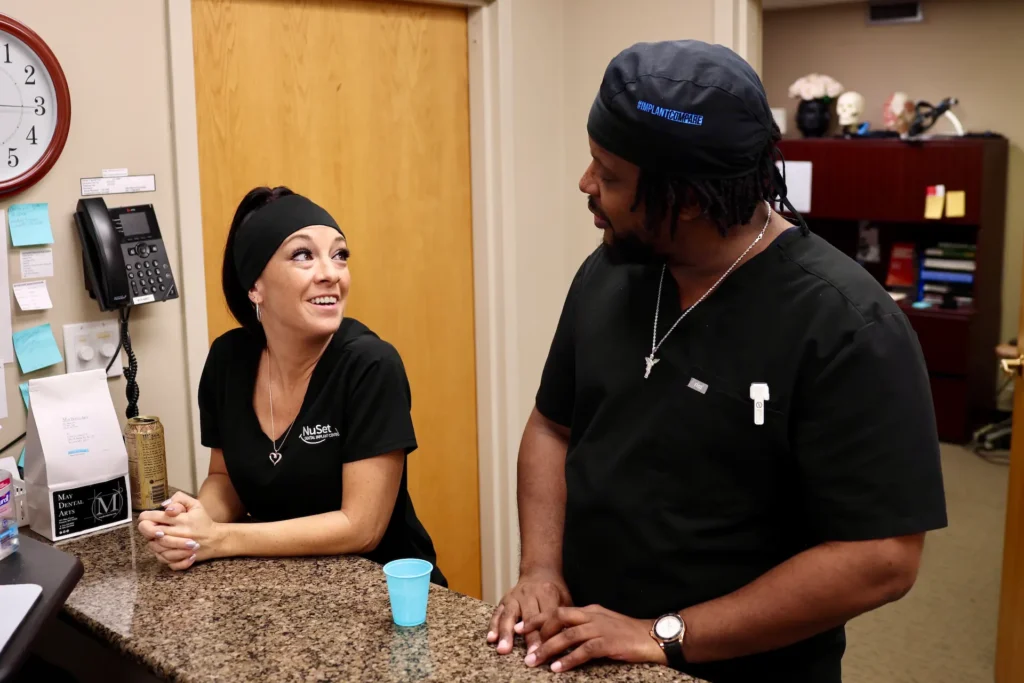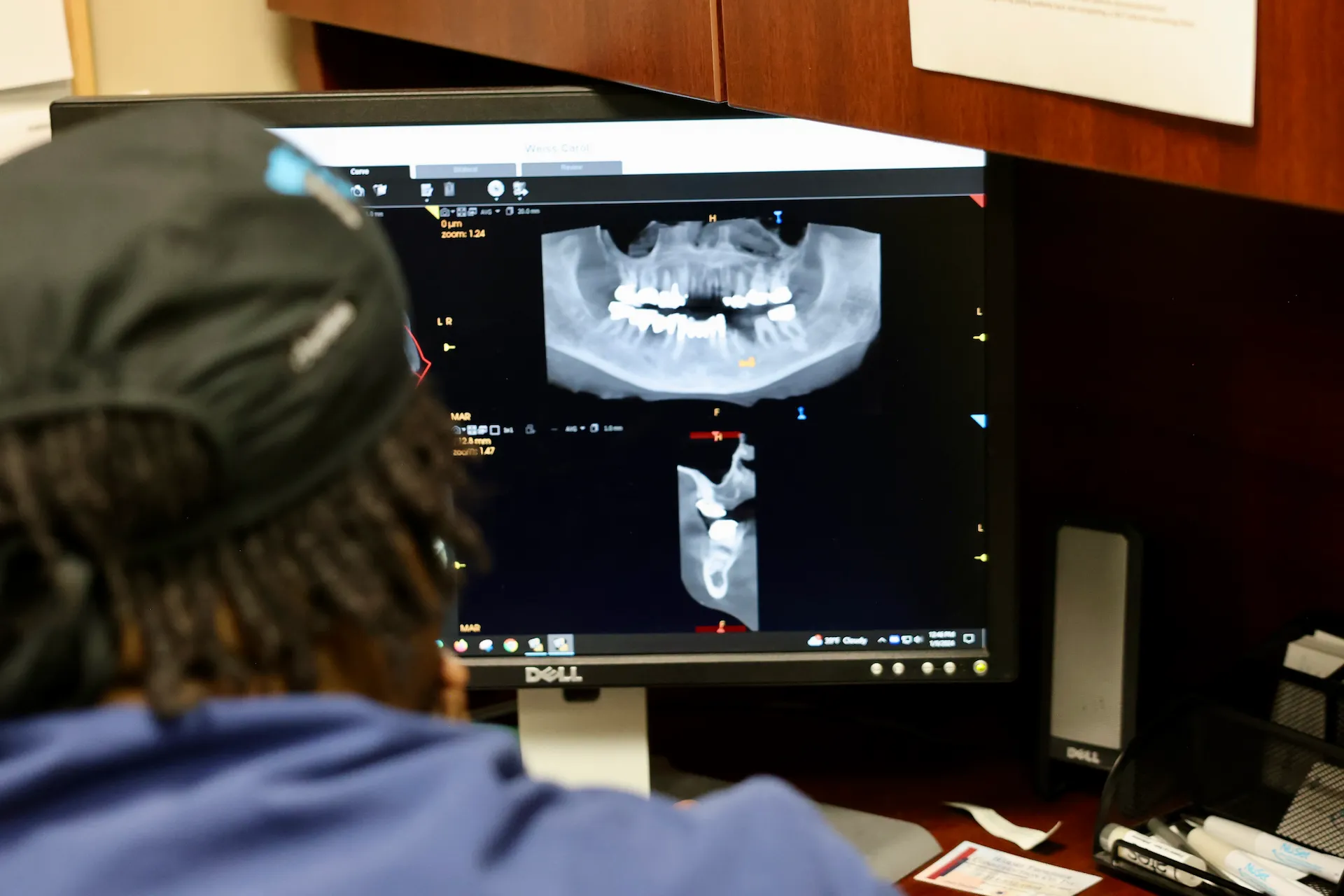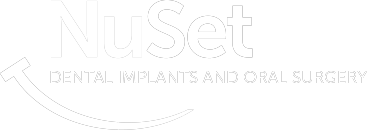Are you looking to restore your smile after tooth extraction and wondering how long it would take? Restoring a beautiful smile after a tooth extraction involves several steps. When teeth need to be removed due to decay, injury, or other issues, it’s vital to consider replacing them with dental implants.
Dental implant technology has improved significantly, making replacing missing teeth more efficient and widely available. Here’s a detailed explanation of tooth extraction and implant timeline:
Understanding Tooth Extraction
Tooth extraction is a common dental procedure required when a tooth cannot be saved and needs to be removed due to decay, injury, or impaction. In these cases, removing the tooth can prevent further complications and improve oral health.
There are two main types of extractions: simple and surgical. A simple extraction involves removing a tooth visible above the gum line, usually with dental forceps. A surgical extraction is more complex and is used for teeth that are not easily accessible, such as impacted wisdom teeth.
It’s important to consider dental implants after extraction to maintain jaw bone health and prevent long-term issues that arise from missing teeth. Dental implants can offer a durable lifelong solution, helping to preserve the jawbone and support overall facial structure.
The Tooth Extraction Procedure
Tooth extraction can be done in one visit. During the tooth extraction procedure, you will receive local anesthesia to numb the area and will have the option for heavier sedation if required. For a simple extraction, we will loosen and remove the tooth with forceps. In a surgical extraction, we may need to make an incision in your gum to access and remove the tooth.
Here’s a detailed explanation of the procedure and the immediate aftercare:
Consultation and X-rays
Before the extraction, your dentist will take a detailed medical history and thoroughly examine your mouth. X-rays will be taken to evaluate the condition of the tooth and its roots, as well as the surrounding bone structure.
Anesthesia
To ensure comfort during the procedure, local anesthesia is administered around the area of the tooth to be extracted. This numbs the tooth and surrounding tissues, making the process pain-free. In cases of anxiety or more complex extractions, your dentist might suggest sedation options to make you more comfortable.
Loosening the Tooth
Using specialized dental instruments, the dentist gently rocks the tooth back and forth to loosen it from the jawbone and ligaments that hold it in place. This is done carefully to minimize any impact on surrounding tissues.
Removal
Once sufficiently loosened, the tooth is carefully removed from the socket. If the tooth is difficult to extract, the procedure might become surgical, involving small incisions in the gum to remove any bone or break the tooth into smaller pieces for easier removal.
Cleaning the Socket
After removing the tooth, the dentist cleans the socket to remove any remaining tooth or bone debris, ensuring a clean area for healing.
Controlling Bleeding
A gauze pad is placed over the extraction site to help stop the bleeding. You will be asked to bite down on it to apply pressure, which helps form a blood clot in the socket.
What to Expect During the Procedure
It is normal to feel a slight sensation of pressure during a tooth extraction, but rest assured that you will not feel pain, thanks to the anesthesia or the IV sedation, depending on what you and your oral surgeon decide. Our skilled specialists will perform the extraction with gentle precision and efficiency, prioritizing your comfort.
Immediate Post-Procedure Care
Following the post-operative care instructions provided by our dental team will encourage a more comfortable healing. This may include the following:
- Bite on a gauze pad or tea bag to help stop bleeding and promote clotting.
- Avoid smoking, sucking through a straw, and vigorous rinsing for at least 24 hours.
- Take prescribed painkillers for any discomfort, as directed.
- Use ice packs to reduce swelling and inflammation.
- Eat only soft foods, such as pudding or soup, for the first few days.
- Gently rinse your mouth with salt water to promote healing and prevent infections.
- Maintain proper oral hygiene, but avoid brushing near the extraction site for the first 24 hours.
Recovery Timeline
The recovery time for tooth extraction can vary from person to person, but here is a general timeline to give you an idea of what to expect:
First 24 Hours
It is normal to experience some swelling and discomfort during the first 24 hours. Applying ice packs to the affected area can help reduce swelling and alleviate any pain or discomfort.
First Few Days
During the initial few days, it is crucial to take it easy and avoid any strenuous activities that may disrupt the healing process. Stick to a soft diet until your dentist advises you to reintroduce solid foods. Continue practicing good oral hygiene by gently rinsing your mouth with salt water as directed by our dental team.
Healing and Tissue Regeneration
Over time, your body will naturally heal and regenerate the tissues in the extraction site. Depending on the complexity of the extraction and your unique healing abilities, this process can take anywhere from one to two weeks.
Follow-Up Appointments
Our dental team will schedule follow-up appointments to closely monitor your progress and ensure your healing is on track. These appointments allow us to assess the healing process and address your concerns.
Signs of Complications to Watch For
While complications after a tooth extraction are rare, it is essential to be aware of potential signs that may require immediate attention. Contact our dental office if you experience any of the following:
- Excessive Bleeding: Some initial bleeding after the extraction is normal, but if bleeding persists or becomes heavy, contact us immediately.
- Severe Pain: Some discomfort and soreness are expected during the healing process, but if you experience intense or worsening pain that is not relieved by prescribed medications, it may be a sign of complications.
- Swelling: Swelling is common after a tooth extraction, but if the swelling becomes severe, persists, or is accompanied by other symptoms such as difficulty breathing, seek immediate dental attention.
- Infection: Watch for signs of infection, such as persistent or worsening pain, fever, pus, or an unpleasant taste or smell.
Initial Steps Towards Dental Implant
Considering the next steps for restoration after a tooth extraction is crucial for maintaining oral health and functionality. When a tooth is missing, the area of the jawbone that supports it no longer receives the stimulation it needs to maintain its density.
Over time, this lack of stimulation can lead to bone loss, affecting the shape of your face and your oral health. Dental implants are the only tooth replacement option that also replaces the tooth’s root, providing the needed stimulation to the bone which helps prevent bone loss.
However, getting a dental implant involves careful evaluation, planning, and sometimes preparatory procedures to ensure the best outcome.
Evaluation and Planning
The first step towards getting a dental implant is a comprehensive oral health evaluation. If your extractions were the first step in this process, then your dentist would have already gone through this evaluation with you. To plan your new smile, 3D imaging is often used by the oral surgeon to get a detailed view of your jawbone and oral health.
In addition to imaging, a thorough examination of your gums and remaining teeth is conducted to identify any conditions that might affect the success of the dental implant, such as periodontal disease.
After the evaluation and any necessary preparatory procedures (such as extractions or grafting), your dental team will develop a detailed plan for placing your dental implant. This plan will optimize the outcome by considering the best positioning for the implant, the type of implant best suited to your situation, and the timing of the procedure.
Dental Implant Surgery
After the comprehensive evaluation is completed, local anesthesia is administered to numb the area, similar to the extraction procedure. But don’t worry—there are other sedation options that may also be available for patients who would prefer not to be conscious during the procedure. IV sedation is one of the most sought-after sedation options here at NuSet, as it helps people who are a little fearful of the procedure.
Dental specialists can offer immediate load implants, or ‘teeth in a day’ for most patients, but sometimes the entire process can take several months.
Implant Placement
A small incision is made in the gum to expose the bone where the dental implant, a titanium post meant to mimic the tooth root, is inserted. Precision is key, as the implant must be placed at just the right angle and depth.
Once the implant is placed, the abutment may be attached to the implant above the gumline.
For certain candidates, a temporary but functional and aesthetically pleasing tooth (or teeth) can be attached to the implant on the same day as the extraction and implant placement. This approach is often called “immediate load” and depends on sufficient bone quality and quantity to support the implant and the temporary restoration securely.
Immediate Post-Operative Care
After the implant surgery, you should be aware that minor bleeding and swelling are normal. Gauze will be applied immediately after the procedure to manage bleeding, and you can use ice packs to reduce swelling. We will also provide you with specific instructions on how to clean the implant site without disturbing it.
Follow-up visits are vital. They are essential for monitoring the implant site and ensuring the implant’s integration with the bone is successful. These appointments also allow for adjusting the temporary restoration, if used, and planning for the permanent restoration.
Healing and Osseointegration
After the placement of a dental implant, the healing process and osseointegration are crucial steps toward achieving a successful and long-lasting result.
Osseointegration is the process by which the dental implant, typically made of titanium, integrates with the jawbone, essentially becoming a part of the body. This biological bonding is crucial for the implant’s stability and durability, providing a strong foundation for the replacement tooth or teeth.
This healing period allows the implant to function just like a natural tooth root, distributing chewing forces evenly across the jaw and stimulating bone maintenance.
The timeline for osseointegration can vary depending on individual factors and the specific location within the jaw, but generally, it takes about 3 to 6 months for complete integration. But don’t worry, your oral surgeon will likely place a temporary restoration, like a crown, while the implant heals.
Placing the Abutment
At NuSet, we ensure that your abutments are carefully placed either during the initial implant procedure or in a follow-up surgery. The type of abutment designed for you is tailored to fit your specific dental restoration, whether it be a bridge, denture, or crown.
When it comes to crowns, imagine the abutment as a sturdy, stumpy screw that securely holds your crown in place. This small but important piece plays a crucial role in anchoring your restoration to the implant, ensuring stability and functionality for your beautiful new smile.
Remember, you’ll likely receive a temporary crown or restoration before you’re ready for the final restoration.
Final Restoration Placement
Once the abutment is in place and the gum tissue has healed adequately, the final step in the dental implant process is the placement of the custom-made restoration. This will be a crown, denture, or bridge designed to seamlessly blend with your natural teeth and restore your smile’s functionality and aesthetics.
The transition from abutment placement to final crown placement marks the culmination of the dental implant journey, offering patients a durable, long-lasting solution for missing teeth.
Aftercare and Maintenance of Dental Implants
Proper aftercare and maintenance are crucial for the longevity and success of dental implants. Just like natural teeth, implants require consistent care to prevent complications and ensure their longevity.
- Brush at least twice daily using a soft-bristled toothbrush and non-abrasive toothpaste to avoid damaging the implant surface.
- Use a Waterpik instead of traditional floss to clean around the abutments and under the crown.
- Protect your implants by avoiding foods that could damage the crown or implant.
- Quit smoking, as this can hinder healing and negatively affect the health of the implant.
- Schedule visits every 6 months for a professional cleaning to check the health of your implant and surrounding gums.

Regain Your Complete Smile With Dental Implants After Tooth Extraction
Dental implants are an effective solution for patients who have undergone extractions. Missing teeth can lead to bone loss over time, potentially compromising the structure and health of the jawbone.
At NuSet, we prioritize your oral health and provide comprehensive evaluation, planning, and treatment to ensure the success of your dental implant procedure.
Our dental team gathers critical information through imaging and bone assessment to develop a personalized treatment plan.
Rest assured that our experienced team will guide you through each step, providing you with the highest level of care and support. We understand your concerns and are committed to delivering dental implant solutions that enhance your smile and improve your oral health.
Trust us to help you regain your confidence and achieve a beautiful, functional smile with dental implants. Schedule a consultation with us today to get started!
Frequently Asked Questions
How long do you have to wait for a tooth implant after extraction?
The waiting period for a dental implant after tooth extraction can vary. Typically, dentists recommend waiting 3 to 6 months after extraction to allow the area to heal and the bone to be suitable for an implant. However, individual cases may differ based on the health of the jawbone and the specifics of the extraction.
Can a tooth be extracted and an implant put in on the same day?
Yes, in some cases, it’s possible to extract a tooth and place an implant on the same day, a procedure known as “immediate implant placement.” However, this depends on various factors, including the patient’s overall oral health and the specific conditions of the tooth and jawbone.
Can I get a dental implant 2 years after extraction?
Yes, you can get a dental implant even if it’s been two years or more since the tooth was extracted. However, the longer you wait, the more likely you are to need additional procedures, like bone grafting, to ensure there is enough bone to support the implant. Without a tooth in place to stimulate bone growth, the jawbone can atrophy or shrink over time.
What is the recovery time for a tooth extraction for implants?
The recovery time following a tooth extraction can vary, generally ranging from a few days to a couple of weeks, depending on the complexity of the extraction and the individual’s healing capacity. Before proceeding with an implant, the extraction site must heal fully, which might take 3 to 6 months. This period allows the bone to heal and provides a stable foundation for the implant.





